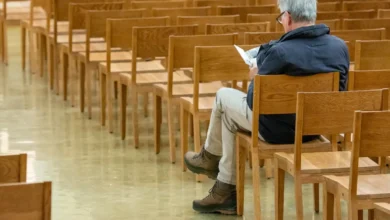If you use cooking gas at home, safety must be a top priority to prevent gas explosions. While using gas at home is not inherently risky, negligence can lead to potential hazards. There are identifiable causes of gas explosions at home, most of which are rooted in human negligence.
Understanding the Nature of Cooking Gas
Cooking gas, also known as Liquefied Petroleum Gas (LPG), is a clean and safe energy source widely used for cooking. It’s the preferred choice for millions of households worldwide because of its efficiency and environmental friendliness. Contrary to some misconceptions, there’s no need to fear using it at home.
One of the primary challenges associated with cooking gas is its invisible and odorless nature. Unlike other energy sources like kerosene or wood, you can’t easily perceive the presence of gas in your home environment. This invisibility makes it challenging to detect gas leaks, and that’s where the importance of safety measures comes in.
To address this invisibility issue, manufacturers add ethanol to cooking gas, giving it a distinct odor. This odor serves as a warning signal, making leaks easier to detect. Unfortunately, some unscrupulous marketers may neglect this safety requirement, potentially selling gas without ethanol. While ethanol-enriched gas is slightly more expensive, the cost is minimal compared to the potential risks of undetected gas leaks.
The Primary Cause of Gas Explosions
Gas explosions, although rare, can occur at home. However, there’s no need to be overly concerned when using cooking gas. Cooking gas is widely adopted worldwide as a safe and efficient cooking fuel, and it is subject to stringent safety standards. The primary risk associated with cooking gas (LPG) is fire, but it’s important to note that various factors can cause fires in homes, not just gas.
The sole factor that can cause a gas explosion at home is a gas leak. Thus, the focus should be on preventing gas leaks through proper safety measures.
Steps to Prevent Gas Explosions
The key idea to embrace is that you can take responsibility for your safety at home. By implementing safety checks, you can significantly reduce the likelihood of a gas explosion in your home. Here are the key steps to follow:
- Buy Only Ethanol-Based Cooking Gas: Ethanol is added to gas to provide an odor, making leaks detectable. Ensure you purchase cooking gas that contains ethanol to enhance safety.
- Avoid Cheap and Inferior Gas Cylinders: Investing in high-quality gas cylinders is crucial to minimize the risk of leaks caused by substandard materials. A slight cost difference should not compromise your family’s safety.
- Regularly Test Your Cylinder: Gas cylinders have expiration dates, and regular testing ensures they remain safe to use, reducing the risk of explosions due to cylinder defects.
- Replace Gas Regulators and Burners Regularly: Gas regulators and burners wear out over time and can cause leaks. Replacing them when signs of wear and tear appear is essential to maintaining safety.
- Replace Cylinder Head and Rubber: Regularly inspect the cylinder head for leaks. If you use a regulator-type cylinder, change the rubber inside the cylinder head during refills to ensure a secure connection and prevent gas leakage.
- Address Suspected Leaks Immediately: Never ignore gas leaks. Take immediate action by turning off the gas supply, ventilating the area, and addressing the issue promptly. Safety should always take precedence over convenience.
- Store Your Cylinder in a Safe and Ventilated Location: Adequate ventilation is crucial when storing gas cylinders. Ensure they are kept in well-ventilated areas to disperse leaked gas safely. If you have outdoor space, consider storing the cylinder outside, provided it’s secure and well-ventilated.
Testing Your Gas Cylinder
Many people are unaware that gas cylinders have expiration dates, and an expired cylinder can pose a danger in your home. The due date on a cylinder does not necessarily mean it’s expired; rather, it serves as a reminder to test your cylinder to confirm its continued usability. It’s far better to know when your cylinder is no longer safe to use than to risk an explosion in your home.
Gas plants should also have the capability to physically detect and seize bad cylinders, removing them from circulation. Such cylinders can pose risks not only to your home but also to the gas plant itself. Gas pressure can cause a compromised cylinder to explode, particularly if it is weak and corroded.
You can find the test date written on the body of your cylinder. This date typically begins with the alphabets A, B, C, or D, followed by two-digit numbers, such as in the example (B-23). The two digits represent the year, while the alphabets signify quarters in a year:
- A – First Quarter (Jan-Mar)
- B – Second Quarter (Apr-Jun)
- C – Third Quarter (Jul-Sep)
- D – Fourth Quarter (Oct-Dec)
For instance, B-23 indicates that your cylinder’s due date for usability testing is the second quarter of 2023. You should promptly submit the cylinder for testing at the nearest gas plant. Importantly, these tests are typically conducted free of charge at gas plants, ensuring that your safety is not compromised due to cost concerns.
Conclusion
Gas explosions, fires, or leaks at home are not common occurrences, and they can be prevented by following these safety measures. Cooking gas is a clean and safe energy source when used correctly, alleviating any need for fear. Most causes of gas explosions are related to human errors, often due to neglect or financial constraints. However, with a commitment to safety and adherence to these guidelines, you can confidently use cooking gas at home without worrying about gas explosions. Your safety and the safety of your family should always be the top priority when using cooking gas equipment.









